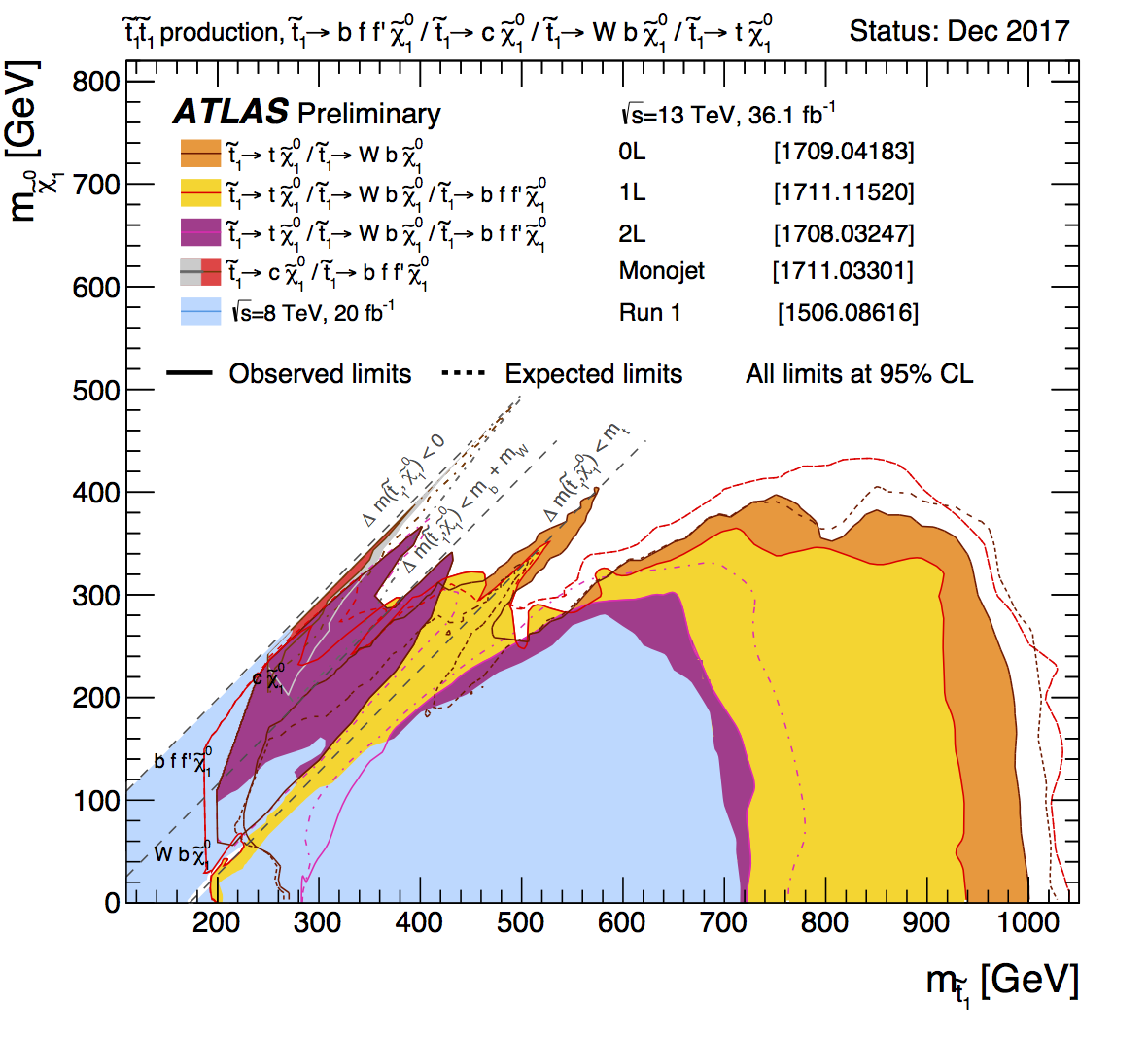Charming SUSY: running out of places to hide
7 May 2018 | By

Why is gravity so much weaker than the other forces of nature? This fundamental discrepancy, known as the “hierarchy problem”, has long been a source of puzzlement. Since the discovery of a scalar particle, the Higgs boson, with a mass of 125 GeV near that of the W and Z bosons mediating the weak force, the hierarchy problem is more acute than ever. Due to large quantum corrections the most natural mass of the Higgs boson should be many orders of magnitude above the one observed. Potentially as large as the Planck mass of order 1019 GeV, the energy at which gravity is expected to become as strong as the other forces.
Supersymmetry addresses the hierarchy problem by introducing partners of the known elementary particles that cancel these detrimental quantum corrections to the Higgs mass. For this solution to work, however, the supersymmetric partner of the top quark (known as the “stop”) must have a mass not too different from that of the top quark itself. When this is the case, supersymmetry “stabilises” the mass of the Higgs boson because the top and stop contribute with opposite signs to the quantum corrections.
Similar to the top quark itself, the stop is generally expected to decay via a bottom quark. Many attempts have been made to discover the stop in such decays. However, an intriguing theoretical possibility is that the stop might instead preferentially decay to final states containing a charm instead of a bottom quark.

ATLAS has released a new search for stops decaying to charm quarks, significantly improving previous results that used 8 TeV proton-proton collision data. One of the main challenges in the search is identifying the presence of charm quarks in proton-proton collisions events. Particles containing a charm quark travel just a fraction of a millimetre before decaying. This is unlike most particles composed of lighter quarks, which are either nearly stable or decay almost instantly after they are produced.
Thanks to ATLAS’ superb particle tracking capabilities, physicists were able to pick out small displacements from charm quarks amongst hundreds of other tracks in the collision. Performing this feat is more challenging for charm quarks than bottom quarks, since particles containing bottom quarks travel longer on average before decaying, making then easier to identify. The new ATLAS search is also able to detect signals from the supersymmetric partner of the charm quark (the “s-charm” or “scharm”). Such particles could be lighter than other quark superpartners and thus may be more copiously produced at the LHC. Their signal in the detector would be identical to that of stops considered by the search.
Though the ATLAS search found no signals of stops or scharms, new limits were set on the masses of these hypothetical particles, as shown in Figure 1. These results complement those from other ATLAS searches for the stop, summarised in Figure 2. There appears to be little room left for stops of similar mass to the top quark, and the hierarchy puzzle remains unsolved.
Links
- Search for supersymmetry in final states with charm jets and missing transverse momentum in 13 TeV proton-proton collisions with the ATLAS detector (arXiv.org: 1805.01649, see figures)
- Search for pair-produced third-generation squarks decaying via charm quarks or in compressed supersymmetric scenarios in proton-proton collisions at 8 TeV with the ATLAS detector (arXiv.org: 1407.0608, see figures)
- Search for scalar charm quark pair production in proton-proton collisions at 8 TeV with the ATLAS detector (arXiv: 1501.01325, see figures)
- See also the full lists of ATLAS Conference Notes and ATLAS Physics Papers.



